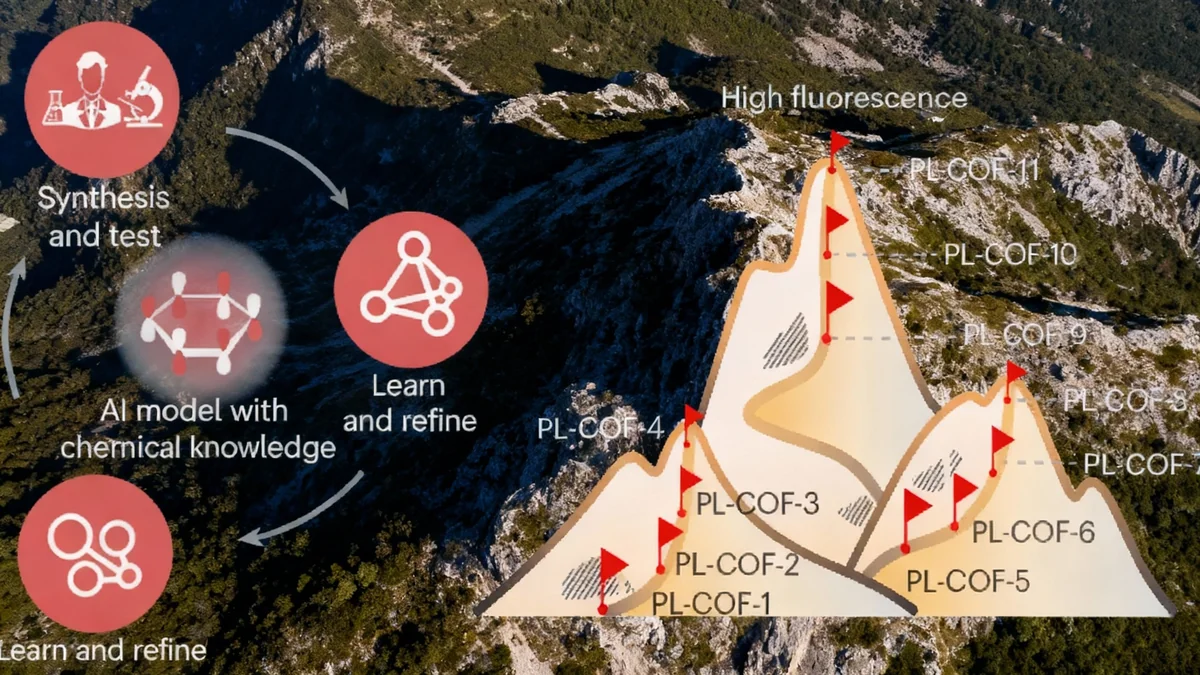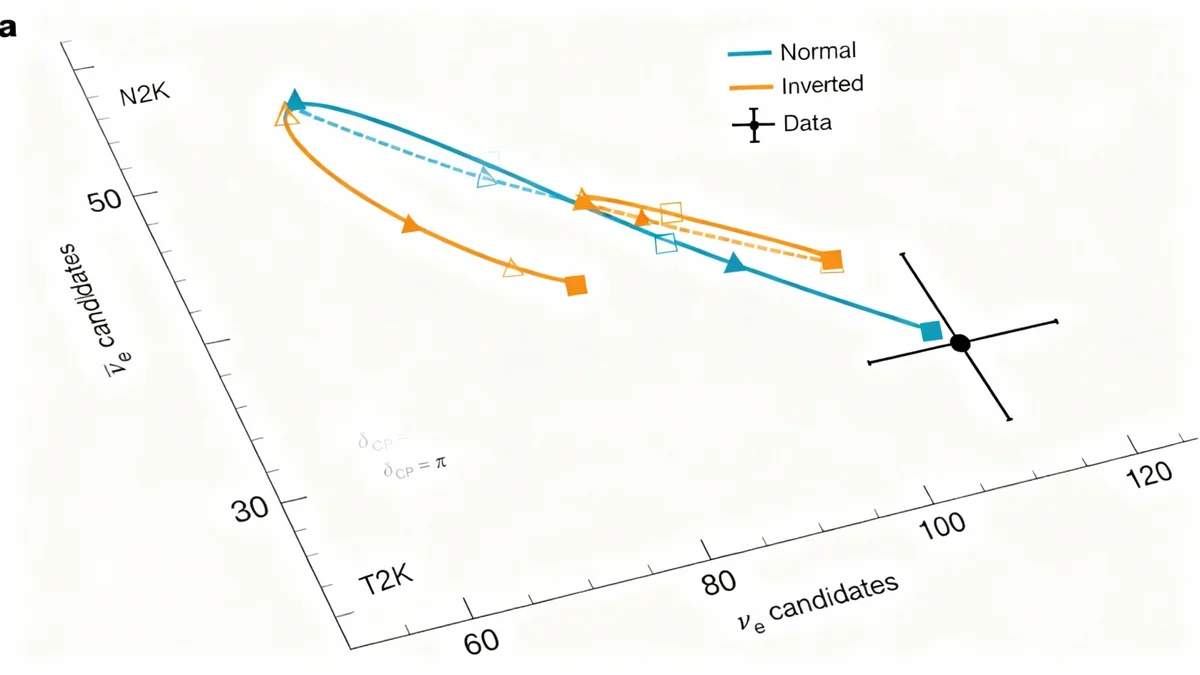Scientists have developed an artificial intelligence system that dramatically accelerates the discovery of new materials, identifying a highly fluorescent compound after only 11 experiments from a pool of over 500 possibilities. This new approach could revolutionize fields from medical imaging to electronics by making the development of advanced materials faster and more efficient.
The breakthrough, which combines AI recommendations with real-world lab testing in a continuous loop, led to the creation of a Covalent Organic Framework (COF) with a photoluminescence quantum yield of 41.3%. This property makes it exceptionally bright and suitable for sensitive applications, including high-resolution imaging of biological systems.
Key Takeaways
- Researchers created an AI-driven process that combines machine learning with laboratory experiments to find new materials.
- The system identified a highly fluorescent material after testing just 11 combinations out of a possible 520.
- The newly discovered material, a type of Covalent Organic Framework (COF), has a high quantum yield of 41.3%, making it very bright.
- This discovery has significant potential for advanced medical imaging, such as viewing blood vessels in the brain.
A Smarter Approach to Material Science
The search for new materials with specific properties, like high fluorescence, is traditionally a slow and costly process. Scientists must often rely on intuition and extensive trial-and-error, synthesizing and testing countless compounds to find one that works. This can take years and consume significant resources.
To overcome this challenge, a research team developed a method called an "AI-assisted interactive experiment–learning evolution approach." This system creates a closed loop where the AI model proposes promising material formulas, scientists synthesize and test them in the lab, and the results are immediately fed back to the AI. With each cycle, the model learns and refines its predictions, becoming more accurate over time.
What are Covalent Organic Frameworks (COFs)?
COFs are porous, crystalline materials made from organic building blocks linked by strong covalent bonds. Their highly ordered and customizable structures make them useful for a wide range of applications, including gas storage, catalysis, and, as demonstrated in this research, optical technologies.
This iterative process allows the AI to evolve alongside the experiments, moving beyond simple statistical predictions. The model was designed to incorporate fundamental chemical knowledge, including insights into electronic configurations and quantum-level mechanics, to understand why certain combinations work better than others.
From 520 Possibilities to One Breakthrough
The research team started with a library of 20 amine and 26 aldehyde chemical building blocks. Combining these components could theoretically produce 520 different COFs, a vast chemical space that would be impractical to explore manually.
Instead of embarking on a years-long screening process, the team deployed their AI system. The AI analyzed the potential combinations and recommended a small batch of candidates for synthesis. After the first round of experiments, the results—both successes and failures—were used to retrain the model.
Unprecedented Efficiency
The AI-guided approach achieved its goal with remarkable speed. By testing only 2.1% of the total possible material combinations, the team successfully identified a top-performing compound. This represents a massive reduction in the time and labor required for material discovery.
This cycle of recommendation, validation, and learning continued. By the 11th experiment, the system had pinpointed a specific COF, designated PL-COF-11, which exhibited a photoluminescence quantum yield of 41.3%. This measurement indicates an exceptionally high efficiency in converting absorbed light into emitted fluorescent light, a key trait for advanced imaging agents.
A New Tool for Medical Imaging
The high fluorescence of the newly discovered COF makes it a promising candidate for biological imaging. Highly sensitive fluorescent probes are essential for observing cellular processes in real time without causing damage to living tissue. The brighter the probe, the clearer the image and the lower the required light intensity.
To demonstrate its potential, the researchers used the new material for two-photon fluorescence microscopy (2PFM) imaging. This advanced technique allows for deep-tissue imaging in living animals with high resolution.
The team successfully used the COF to label and visualize the brain vasculature of a living mouse. The material's brightness provided clear, detailed images of the intricate network of blood vessels, showcasing its practical utility in biomedical research.
This capability could help scientists study conditions that affect the brain's blood supply, such as strokes, aneurysms, and the progression of diseases like Alzheimer's. The ability to see these structures with such clarity opens new doors for understanding and potentially treating complex neurological disorders.
The Future of AI-Driven Discovery
This work highlights a significant shift in how scientific discovery can be conducted. By integrating artificial intelligence directly into the experimental workflow, researchers can navigate vast and complex design spaces with greater speed and precision. The approach is not limited to fluorescent materials and could be adapted to search for compounds with other desirable properties for use in:
- Energy: Developing better materials for batteries or solar cells.
- Catalysis: Creating more efficient catalysts for industrial chemical reactions.
- Environmental Science: Designing materials for carbon capture or water purification.
As AI models become more sophisticated, these human-machine partnerships are expected to become a cornerstone of scientific research. By handling the complex data analysis and prediction, AI frees up scientists to focus on experimental design and interpreting results, ultimately accelerating the pace of innovation across all scientific disciplines.





